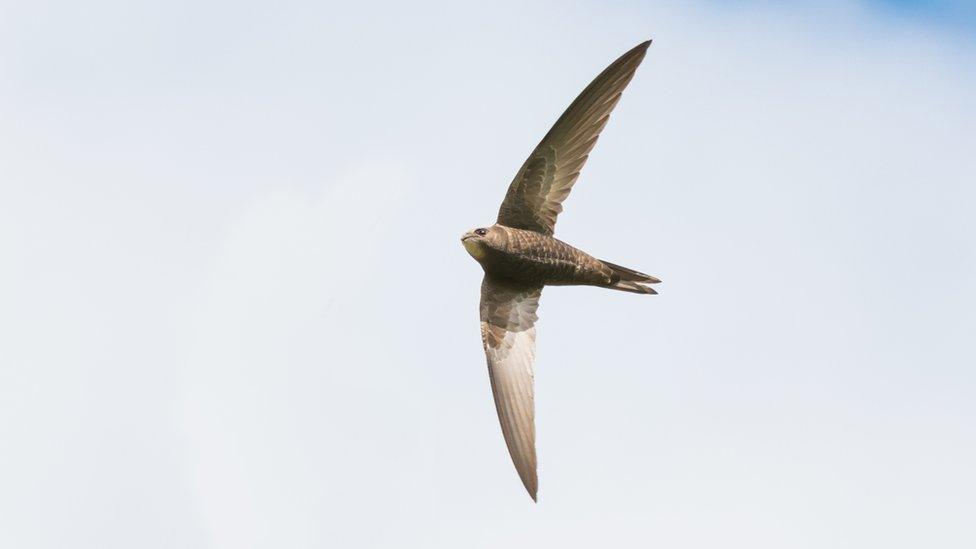How to help endangered birds in your garden
- Published
- comments

It's estimated that almost 60% of UK swifts have disappeared over the last 25 years
Swifts and house martins were recently added to the UK red list of threatened birds following a significant decline in their numbers over the years.
It's estimated that almost 60% of UK swifts have disappeared over the last 25 years, according to the Royal Horticultural Society (RHS) and The Wildlife Trusts.
Now, the charities are urging people to help slow the drop in the numbers of swifts, swallows and house martins through a new campaign called 'Wild About Highflyers'. They want people to make small changes to their gardens to help look after the species.
"Sadly, these birds - like much of our wildlife - have suffered severe declines in recent decades due to habitat loss and plummeting insect numbers, which are affected by pollution, the impacts of development, and climate change," said Dr Rob Stoneman who is the director of landscape recovery at The Wildlife Trusts.
The number of house martins has also declined
"With a bit of diversity and structure, a garden can become a haven for all kinds of wildlife, providing nesting sites, shelter and food. It's all about being creative, ditching all chemicals, and letting things go a bit wild.
"If we can encourage enough gardeners to give a bit of their garden over to wildlife, it could work wonders for the natural world, which means more insects for swallows and more enjoyment of wildlife for people."
How can you help look after endangered birds?
Jenny's been finding out more...
Helen Bostock is a senior wildlife specialist at the RHS. She's come up with some key ways people can support birds in their gardens:
1. Provide a box for birds to nest in
Some birds will choose where they live, but others are also happy to use manmade boxes. These can be a lifesaver if natural nesting spots are in short supply, or if human building work affects where birds can nest.
2. Lend a hand with nest lining
Birds use lots of different nesting materials including things like lichen, moss, grass, wool, hair and feathers. Hanging up undyed sheep's wool will ensure there's a plentiful supply of warm nesting material fr birds in your garden.
Pets should be kept away from baby birds found in gardens
3. Ensure birds are kept well fed with insects
Huge declines in insect numbers means less food for hungry birds.
Planting an insect-friendly border or meadow flowers such as wild carrot, poppies, yarrow, scabious and bistorts can help attract insects. What you're looking for are flowers with open petal structures which even the tiniest of flies, wasps and beetles can land on and access the nectar or pollen.
4. Watch out for pets
Be sure to keep pets, especially cats, indoors when you notice young birds in the garden. Baby birds can be spotted hopping about on or close to the ground. It's easy to mistake this for a chick in need, but this is normal behaviour for many fledglings when first out of the nest and the adults are often nearby.
- Published1 December 2021
- Published23 June 2020
- Published5 December 2015
